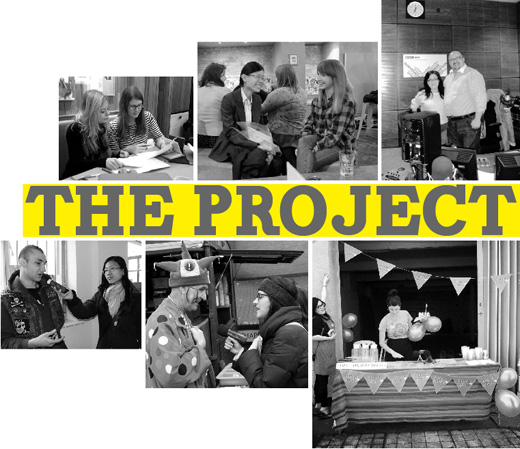
What is Digbeth Speaks?
Digbeth Speaks is a volunteer project that has been funded by the Heritage Lottery Fund’s ‘All Our Stories’ scheme, which has enabled communities to explore, share and celebrate local heritage. The project has been led by young members of the Friends of Birmingham Archives and Heritage, based at the Library of Birmingham, alongside a dedicated group of volunteers who largely comprise students from the University of Birmingham.
Digbeth Speaks has created a time capsule of Digbeth as it is today. We have recorded people’s stories and experiences of the area in three ways:
1. Oral history interviews, which are in-depth recordings with individual people
2. Vox pops, which are short, informal recordings with people at events
3. Photography of people, places and events
Who did we speak to?
Over the course of the project we interviewed a range of organisations and individuals including residents, artists, musicians and people who socialise in Digbeth. We also attended a variety of events such as the St Patrick’s Day parade, a vintage fair at the Custard Factory, exhibitions at VIVID Projects, Stryx and Grand Union, the Warwick Bar Fete and a retro gaming night.
This allowed us to obtain diverse accounts from individuals who are based in Digbeth. It also enabled us to capture spontaneous reactions and first impressions from people who might have been in Digbeth for the first time.
Where is Digbeth?
Digbeth is a unique area of inner city Birmingham that has undergone many changes over the decades and it continues to transform. For this project we have taken Digbeth to include Deritend and we have roughly drawn the boundaries from St Martin’s Church, Fazeley Street and the area circled by Alcester Street. Our definition of the area is therefore partly based on this geographical radius but also includes what people in Birmingham generally refer to when talking about Digbeth.
Digbeth’s Past
Digbeth and Deritend developed around the main route into Birmingham’s market. During the 18th and 19th centuries it became one of the most heavily industrialised areas in the city, where production flourished around the canal network. Large establishments such as Bird’s Custard Factory and the Typhoo Tea Factory were major manufacturers and employers. The streets were full of back-to-back housing, workshops and factories and it was a densely populated area with a correspondingly high number of pubs serving the residents and workers. It was also an area where immigrants arrived into the city. In the 18th century there was a large Italian population and there has been a very strong Irish presence in since the 1800s.
In the 1950s and 1960s the vast majority of housing was demolished but Digbeth remained an industrial area. Over the past few decades the industry has declined leaving a large number of empty or repurposed factories and warehouses. This situation has enabled an arts community to establish itself due to the ample number of possible studio spaces combined with reasonable rent prices. Digbeth has also become known as the ‘alternative’ part of Birmingham and has a strong music and club scene. There has been sporadic redevelopment of the area with more promised in the future.
Why ask Digbeth to speak?
Digbeth Speaks aimed to capture people’s stories and impressions of Digbeth which might otherwise remain undocumented and become lost. Oral history interviews gave us a way of recording personal memories, experiences and feelings that are not usually contained within official documentation. By giving individual interviews, project participants were able to tell us their stories in their own words. These recorded stories will be deposited in the Library of Birmingham’s archives, meaning that they will be preserved and accessible for generations to come.
What can I see on this website?
This website displays our interpretation of the material that we have gathered during the course of the project, alongside some of these audio recordings and photographs. The material is grouped under the themes of Home, Coming Together, Play, Work and Create, which are areas that the interview content seemed strongly to suggest were important to people. Rather than attempting to offer a comprehensive account of the whole of Digbeth, the website presents a snapshot of our project findings.
What else can I see?
The Digbeth Speaks blog is packed with interesting features and gives an insight into how the project progressed.
What next?
All of the recordings will be housed permanently in the Library of Birmingham’s archives, which will be available to the public through open access. We hope that Digbeth Speaks will provide a point from which further projects and research could be undertaken as Digbeth continues to evolve.